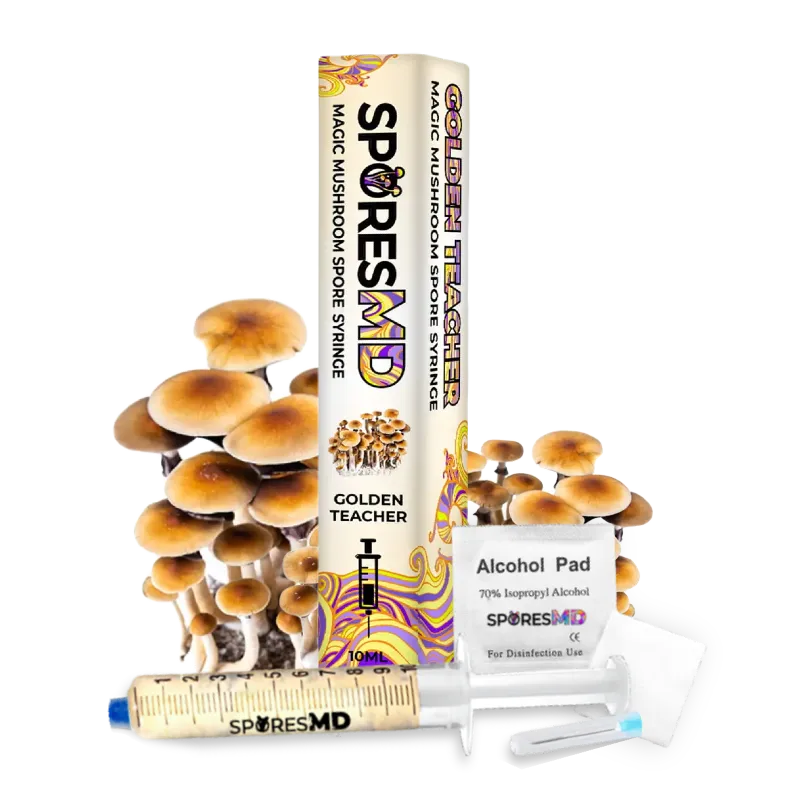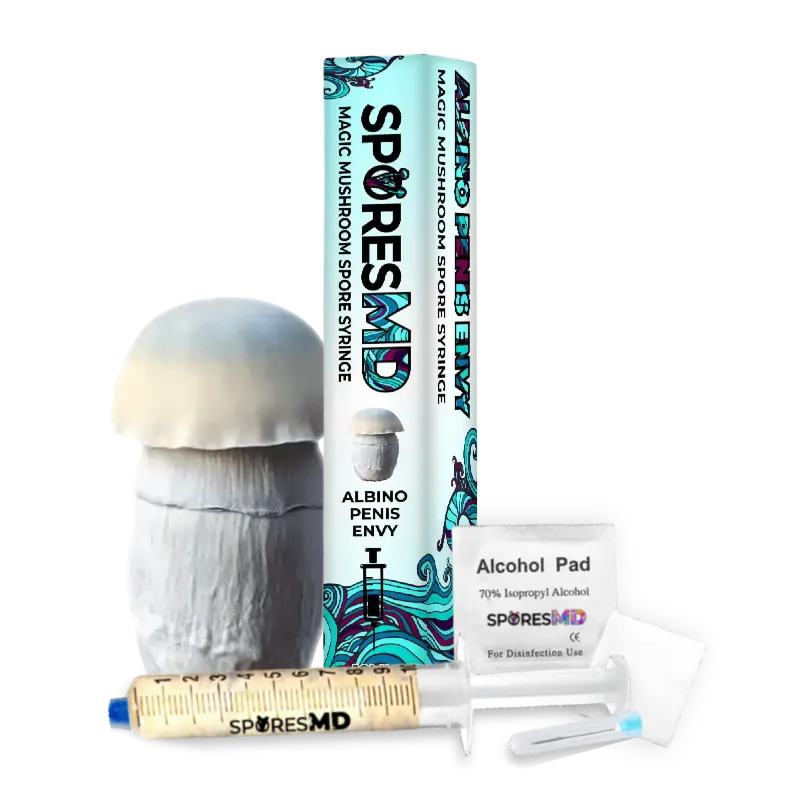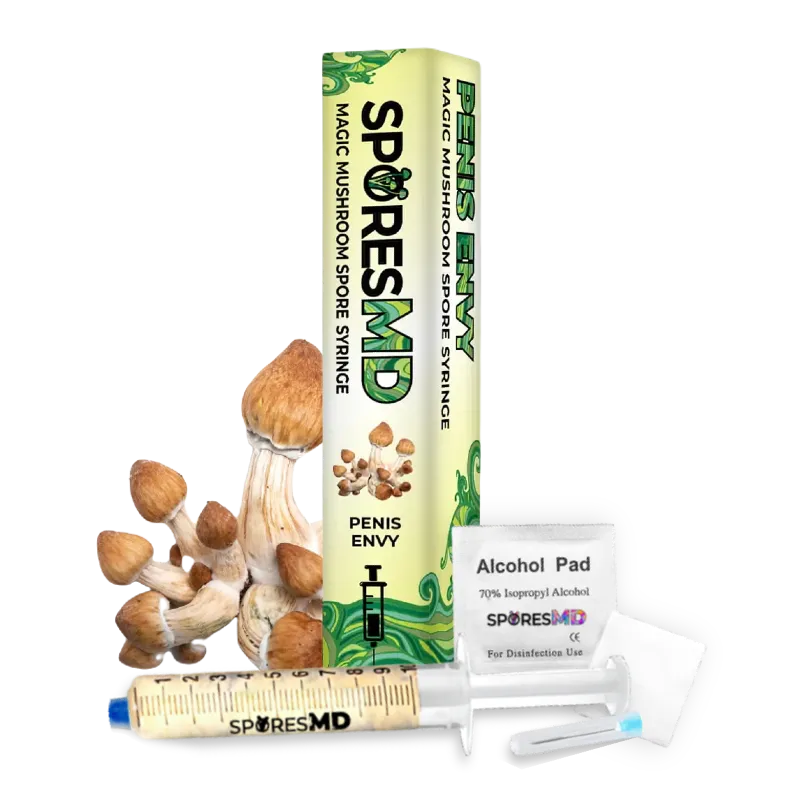Key Takeaways
- Spore Syringes and Isolated Spore Syringes are essential tools in mushroom cultivation. The former promotes genetic diversity, whereas the latter ensures uniform growth.
- A spore syringe, filled with different mushroom spores, can result in diverse and unpredictable outcomes. These syringes have a longer shelf life stored properly.
- Isolated Spore Syringes contain a single type of psilocybe spore. This leads to uniform growth, predictable results, effective nutrient utilization, and potentially increased yield.
- There are inherent contamination risks in both methods. Spore Syringes may introduce multiple contamination sources, whereas Isolated Spore Syringes require strictly sterile environments.
- The choice between the two largely depends on the cultivator’s goal. Spore Syringes are best for comprehensive genetic study, while Isolated Syringes are ideal for consistent production and yield-focused goals.
- In terms of practical uses, Spore Syringes are useful in large-scale and long-term studies due to their genetic diversity and shelf life. Isolated Syringes excel in mycelium-focused studies and cultivation processes seeking uniform results.
Definitions and Basic Differences
Regular Spore Syringe
A spore syringe, commonly employed in mushroom cultivation, is a sterile device filled with mushroom spores suspended in liquid. Often chosen for its ease of application, a spore syringe can remain viable for many years when stored properly – in a cool, dark place within an airtight container. Preparing one involves scraping some spores from a spore print into a sterile container with distilled water and then mixing it extensively. Then, the mixed solution is pulled into a syringe.
At SporesMD, spore syringes are filled up to 10cc. Preference lies in preparing spore syringes within a sterile environment, ideally in front of a laminar flow hood to maintain a clean,-contained area, minimizing contamination.
Components
The primary components of a Spore Syringe are the mushroom spores and the liquid medium. The liquid could be distilled water or some other nutrient-rich solution. This suspension of microscopic spores varies in density and coloration, in line with the mushroom species.
Moreover, spore size is contingent on the size of the mushroom cap that drops spores. For example, mushroom species with small caps leave small spore prints while those with large caps result in more substantial prints. Nevertheless, worry not about the print size since even a spore print as small as a dime harbors millions of individual spores. In fact, one spore print can typically give rise to 5 to 100 10ml spore syringes, thereby demonstrating spore prints’ potency.
In addition, the mushroom species determines the color of the spore print, which, in turn, depends on the color of the spores themselves and the amount of spores dropped. Various mushroom types exhibit different color spores, spanning from white to rust, all the way to dark purple or black. Some species characteristically produce lighter spore prints as they don’t drop too many spores, while others let off a plethora of spores, resulting in a thicker spore print that enhances the darkness of the spore color.
Ultimately, a spore syringe renders a microscopic view of a plethora of spores, which, when transferred to a glass slide, can be easily visualized under a microscope.
Exploring Isolated Spore Syringes
Moving forward from the world of spore syringes, let’s delve into another dimension: isolated spore syringes.
Definition
An isolated spore syringe isn’t your average spore syringe—it’s a level ahead. Unlike the regular spore syringe that holds a myriad of spores from different varieties of mushroom, an isolated spore syringe contains only one type of mushroom spore. It’s akin to refining raw oil into its purer form.
The Isolation Process and Its Benefits
Isolation in this sense involves identifying and separating single spore germinations from a group. You might wonder, “Why go through this hassle of isolation?” The answer lies in the advantages this singular-focus yields:
Uniformity of Growth: With isolated spores, each mushroom cropping you get exhibits uniform growth characteristics. The look, the feel, and the size—they’re replicas.
Predictability: By removing the element of intra-species diversity, you gain predictability. Know what you’re growing, how it grows, and when it matures—it’s like setting a predictable rhythm to your cultivation process.
Streamlined Nutrient Utilization: Just imagine a dining table with identical twins eating the same meal—they know what the other likes and there’s less competition. Same with isolated spores in a substrate, they utilize nutrients in a streamlined, effective manner since they share identical nutritional needs.
Increased Yield: Inferring from the points above, ultimately, isolated spore syringes are a pathway to increased yield. When growth is uniform, predictable, and nutrient utilization is optimized, the overall output increases.
It’s important to note that working with isolated spore syringes calls for a bit more knowledge about mushroom cultivation. It’s like being in the big leagues. But with some study and practice, this becomes a game changer—not only enhancing your understanding of mushroom growth patterns but adding a new dimension to your cultivation process.
Unleashing the world of isolated spores is like being handed a master key—it opens up a world of possibilities you couldn’t access with a regular spore syringe.
Key Differences
As you dive deeper into mushroom cultivation, understanding the finer distinctions, such as the differences between spore syringes and isolated syringes, becomes vital. These variations involve aspects of genetic diversity, contamination risks, and consistency.
Genetic Diversity
Consider spore syringes a genetic cocktail. They house varied spores derived from different mushrooms. Diverse genetic combinations are bound to surprise you with exciting mushroom characteristics — an adventure worth its weight in spores! In contrast, isolated syringes uphold genetic consistency. Only housing spores from one selected mushroom, they pave the way for predictable and uniform mushroom growth.
Contamination Risks
Each methodology tags along with its own contamination concerns. With spore syringes, contamination risks rise when working with whole grains. On the other hand, isolated syringes crave sterile environments. While the cultivation arena must remain clean and sterile, beginners might find this controlled environment challenging. But fret not! With patience and practice, it’s all achievable.
Consistency and Reliability
Isolated syringes shine in the arena of reliability. Their genetic uniformity brings predictability to your mushroom cultivation endeavor. Every harvest is consistent, letting your mastery of the process compound over time. However, they do come with a limited shelf life, which requires thoughtful planning. Spore syringes offer a robust shelf-life, up to six months in cool, dark conditions. With a variety of strains at your fingertips, they represent a reliable choice for extended research.
Your choice between spore syringes and isolated syringes depends on your cultivation goals. If genetic diversity and longevity excite you, spore syringes are your treasure. But, if consistency and production yields are your target, isolated syringes serve as a prized companion. Regardless, mushroom cultivation promises to be an enlightening journey as fascinating as the fungi themselves.
Advantages and Disadvantages
Understanding the pros and cons of using standard spore syringes versus isolated spore syringes is essential for informed decision making in mushroom cultivation.
Pros of Regular Spore Syringes
- Genetic Diversity: Standard spore syringes come packed with spores from different mushrooms, enriching the genetic mix. This diversity may lead to innovative characteristics in your mushrooms, allowing for fascinating research opportunities and unique mushroom varieties.
- Shelf Life: Spore syringes can remain viable for several years if kept in appropriate conditions—cool, dark, and airtight—yielding a considerable shelf life and extended research duration.
3.Utilizing Spore Prints: Standard spore syringes convert spore prints into a more applicable form, effectively utilizing most spore prints.
Cons of Regular Spore Syringes
- Contamination Risks: As spore syringes involve multiple spores types, they can potentially introduce several contamination sources at once when cultivating on whole grains.
- Unpredictability: Due to the array of mushroom spores in standard syringes, the results can be diverse, sometimes resulting in unexpected outcomes, which might not be ideal for specific research or cultivating particular strains.
Pros of Isolated Spore Syringes
- Predictable Growth: Isolated spore syringes offer genetically uniform spores, translating into a more consistent, predictable mushroom growth, which can be beneficial for commercial or scientific purposes.
- Streamlined Nutrient Utilization: With only one type of spore drawing from the substrate’s nutrients, the chances increase for successful colonization and subsequent fruiting.
- Yield Increase: Uniformity in spore genetics may result in an increased yield, valuable for commercial growers.
- Limited Genetic Variance: Isolated syringes do not offer the genetic diversity that you can find with standard spore syringes. This limitation might restrict some research capabilities or the evolution of new strains.
- Shelf Life: Once prepared, isolated spore syringes have a considerably shorter shelf life than traditional spore syringes, making long-term storage projects more challenging.
Practical Uses in Mycology
In the arena of mycology, the choice of tools can be as diverse as the fungi kingdom itself. Both spore syringes and isolated syringes have their unique purposes and applications. Dive into the specific scenarios where each excels in the subsequent subheadings.
When to Choose a Syringe
Spore syringes offer a treasure trove of genetic diversity. To explore wide genetic outcomes or model natural mushroom behavior, they serve as the go-to choice. Scientists studying genetic variation, spore structure, and developmental stages predominantly use these. Besides, when the research revolves around long-term studies or requires a stable supply over extended periods, spore syringes, with their six-month shelf life in optimal storage conditions, prove an excellent choice.
When to Opt for an Isolated Syringe
For predictability and repeatability, isolated syringes claw their way to the top. They harbor spores from a single selected mushroom, maintaining genetic uniformity. This makes them ideal for consistent production, yield enhancement, and streamlined nutrient utilization studies. They also provide researchers an untarnished lens into mycelial development, making them a valuable tool in mycelium-focused studies or optimized cultivation processes.
Conclusion
So there you have it. Your choice between a spore syringe and an isolated spore syringe truly depends on your cultivation goals. If you’re looking for genetic diversity and extended shelf life, mushroom spore syringes are your best bet. They’re also great for making the most of your spore prints. But remember, they do come with a risk of contamination and unpredictable results.
On the flip side, if you’re after predictable growth, streamlined nutrient utilization, and increased yield, isolated spore syringes are the way to go. They may lack the genetic variance and have a shorter shelf life, but they’re just the ticket for consistent production.
Whether you’re exploring genetic diversity with spore syringes or optimizing cultivation processes with isolated syringes, each has its own role in the fascinating world of mycology. Choose wisely, and happy cultivating!





